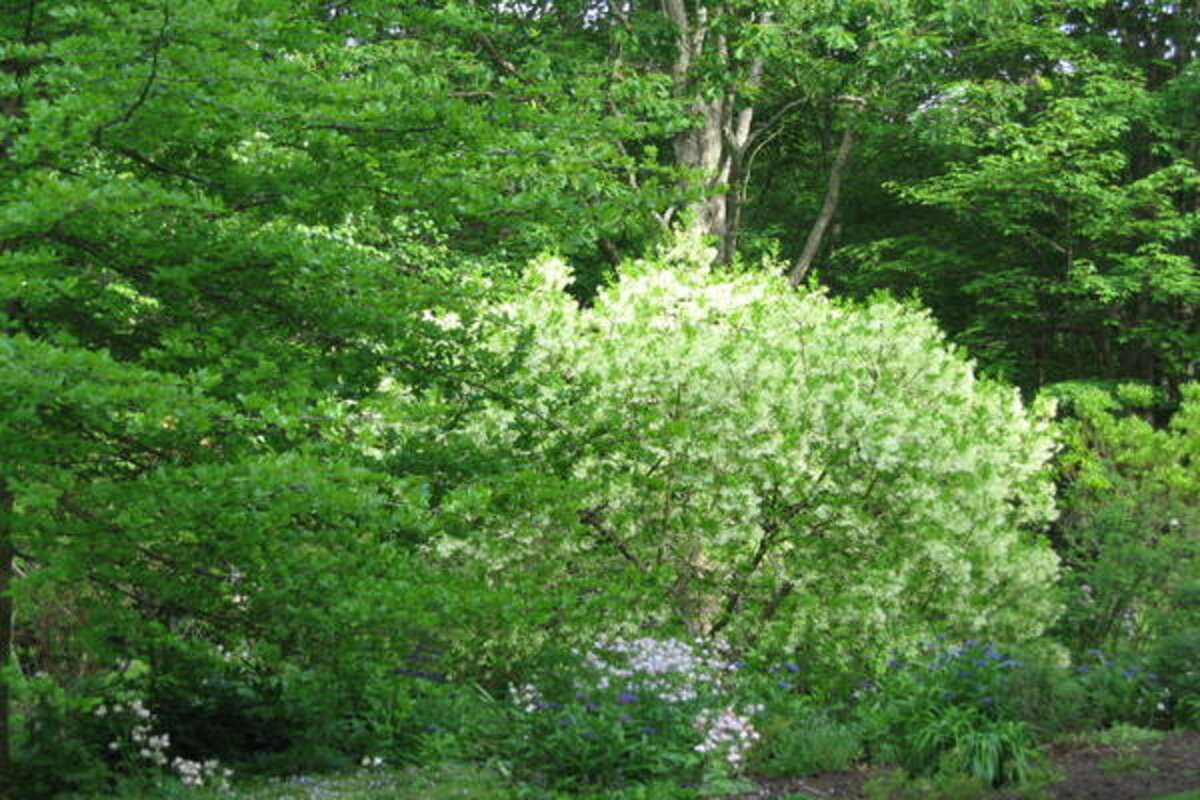Native white-flowering trees for spring
Loading...
It’s spring in southern New England! Still, with deciduous trees still bare and most of the understory just waking up, the landscape remains largely brown and gray.
But in a few short weeks, wherever there are trees, there’ll be shade. White flowers show up beautifully against both backgrounds, which may explain why so many of our native trees and shrubs have them.
We all know and love the flowering dogwood that’s so emblematic of our eastern woodlands, but in this post I’d like to sing the praises of two lesser known trees.
Both have white flowers that can make equally admirable additions to the landscape. In a future post, I’ll talk about two native shrubs with similar qualities.
Reliable harbingers of spring
There are two harbingers of spring I look and listen for every year: the peepers singing and the shads in bloom. Here in Connecticut, I can reliably enjoy both in mid-April.
The shads (also called shadbush, shadblow, juneberry, or serviceberry) are a rather taxonomically confused group of trees and shrubs, but don’t let that put you off. All shads are members of the genus .
is the largest, a tree that can rival a star magnolia in size and shape if given enough sun and good soil.
and are both smaller, more willowy, and usually multitrunked.
There are also hybrid crosses between these species, as well as shrubs forms native to both the East and West Coasts (A. stolonifera and A. lamarckii, respectively).
The tree forms are grown more as ornamental landscape plants, while the shrub forms are grown either for fruit or for naturalizing, since they tend to sucker. All of them have delicate flowers -- borne when the plants are still leafless -- that look like a bunch of short white streamers flying in the wind.
In early summer they produce fruits the size and color of wild blueberries. These come and go in the blink of an eye because they are a favorite bird food, so bird lovers take note.
They are said to make great people food, too, but I’ve never cultivated them for their fruit, and I suspect that humans who try might need to fence them to keep the birds from making off with everything.
To top things off, shads also offer good fall foliage, with yellows and oranges predominating.
In practice, shads for sale in nurseries aren’t always labeled with tremendous accuracy, so don’t rely too heavily on that. You just want to make sure you’ve bought a tree form if you want a tree, and a shrub form if you want a shrub.
Plant all of them at the woodland edge just as you would a dogwood, and they’ll light up gray April days.
Another wonderful tree
, is a little-known native that grows just barely large enough to be called a small tree. It’s a bit of an ugly duckling plant when young, grows slowly, and even old specimens can benefit from judicious pruning to reduce twiginess and yield a more refined shape.
What you really grow a fringetree for is its flowers: a dense shower of white frills in late May and early June.
Chionanthus leafs out significantly later than most other woody plants, which has made more than one client call me in mid May to say, “I think we lost the fringetree this winter,” but I have yet to see one die in the landscape if planted well.
Buy the plant in flower if you can; plants are either male or female, and males have showier blossoms.
Both shad and fringetree will do fine planted in loamy soil with average moisture and good drainage, although both can tolerate less than this ideal.
Shads can be grown from the Canadian border and even points farther north down through the Carolinas and into parts of Georgia.
Fringetree is cold hardy at least to , but supposedly occurs naturally as far south as the Gulf of New Mexico.
Frotunately for me, they both do well in southern New England, where I love them as low-care woodies that seem to capture and hold light in the garden in their season.
-----
As the owner of A Shady Lady Garden Design, Amy Ziffer has been working with landscaping clients in western Connecticut since 1998. She’s a former editor at Fine Gardening magazine, a contributor to many magazines and books, and blogs at . Her specialty is cold-climate ornamental gardening with a focus on the Northeast. In addition to liking horticulture, she’s fond of critters (wild and domestic), physics, math, and intense outdoor sports, especially in the cold and snow. To read more by Amy here at Diggin' It, click here.





